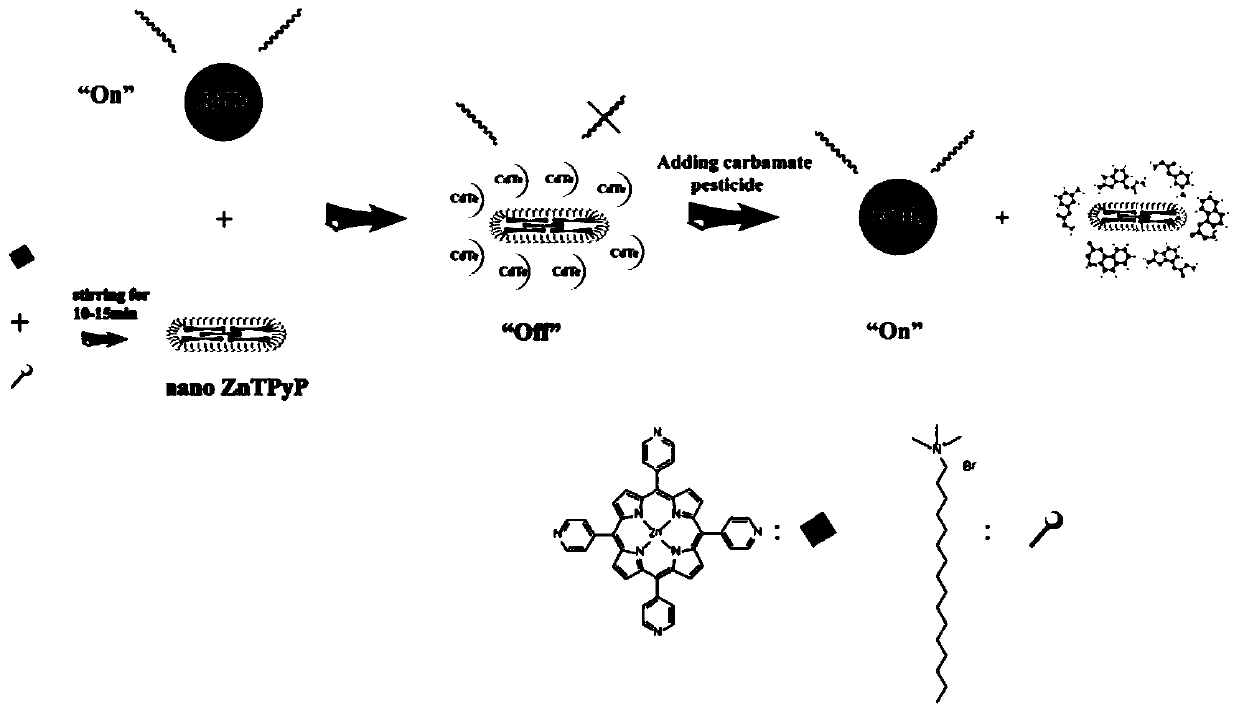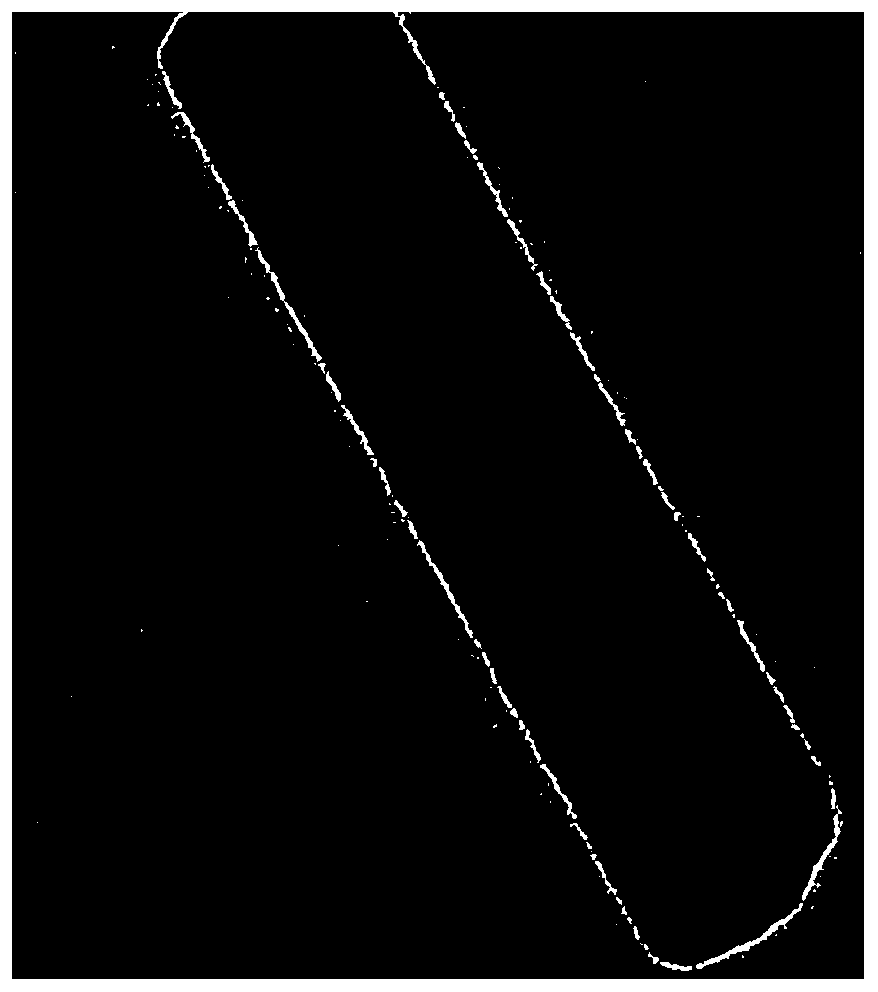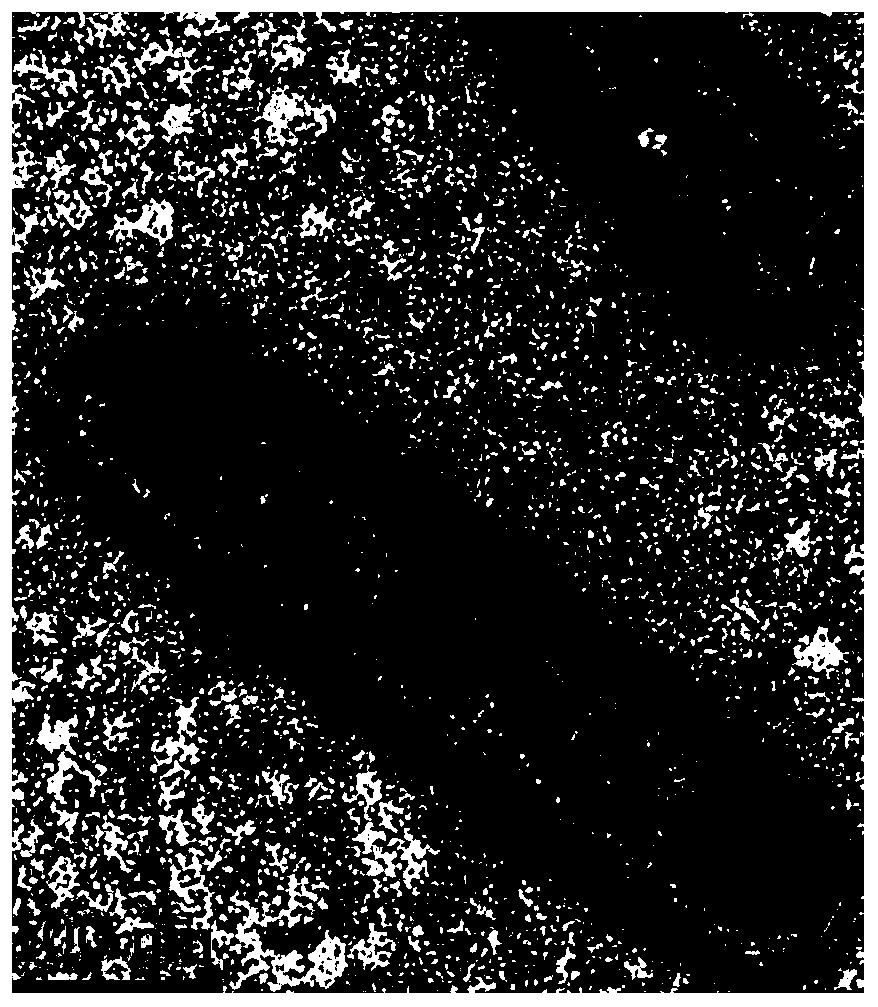Method for detecting carbamate pesticide based on CdTe quantum dot paper chip substrate
A technology of carbamates and quantum dots, applied in the field of paper chip sensing, can solve the problems of rapid on-site detection of pesticide residues, cumbersome operation procedures, complex and sophisticated instruments, etc., and achieve rapid on-site detection, sensitivity and selection High performance and fast response
- Summary
- Abstract
- Description
- Claims
- Application Information
AI Technical Summary
Problems solved by technology
Method used
Image
Examples
Embodiment 1
[0040] The method for detecting amecarb based on CdTe quantum dot paper chip substrate, comprising steps:
[0041] (1) Synthesis of CdTe quantum dots
[0042] Dissolve cadmium dichloride (0.1096g) and N-acetyl-L-cysteine (0.1567g) in 40mL of ultrapure water, and after stirring for 15 minutes at normal temperature and pressure, adjust the pH of the solution with sodium hydroxide solution. Adjusted to 4.60, then filled with nitrogen and stirred in an ice bath for 20 minutes, added sodium tellurite (0.0532g, 2.5mM), stirred for 15 minutes; then added sodium borohydride (0.0109g), stirred for 15 minutes, and finally put this solution into In the reaction kettle, react in an oven at 200°C for 50 minutes, and after cooling to room temperature, the emission wavelength is 550nm, green light is emitted, and the concentration is 2.51×10 -5 mol / L CdTe quantum dots.
[0043] (2) Synthesis of tetrakis-(4-pyridyl)zinc porphyrin self-assembly solution
[0044] Weigh 0.0037g four-(4-pyri...
Embodiment 2
[0064] Detection of carbofuran based on CdTe quantum dot paper chip substrate detection, including steps:
[0065] (1) Preparation of paper chip substrate and tetrakis-(4-pyridyl) zinc porphyrin self-assembly solution
[0066] The preparation of the paper chip substrate and tetrakis-(4-pyridyl) zinc porphyrin self-assembly solution was the same as in Example 1.
[0067] (2) Making Carbofuran standard color chart
[0068] Mix different concentrations of Methiocarb (1-20 μg / L) with tetrakis-(4-pyridyl) zinc porphyrin self-assembly solution (17.85 μM), draw 10 μL of the mixed solution with a pipette gun and drop it on the paper chip substrate , there are different color changes observed in the ultraviolet dark box, combined with Figure 6 As shown, as the concentration of carbofuran increases, the color on the substrate of the paper chip changes from dark green to yellow-green, then to light green, and finally to green, achieving the visual detection of carbofuran on paper, and...
Embodiment 3
[0076] The method for detecting carbaryl based on CdTe quantum dot paper chip substrate detection, comprising steps:
[0077] (1) Preparation of paper chip substrate and tetrakis-(4-pyridyl) zinc porphyrin self-assembly solution
[0078] The preparation of the paper chip substrate and tetrakis-(4-pyridyl) zinc porphyrin self-assembly solution was the same as in Example 1.
[0079] (2) Making Carbaryl Standard Color Card
[0080] Mix different concentrations of carbaryl (1-20 μg / L) with tetrakis-(4-pyridyl) zinc porphyrin self-assembly solution (17.85 μM), and pipette 10 μL of the mixed solution to drop onto the paper chip substrate , there are different color changes observed in the ultraviolet dark box, combined with Figure 7 As shown, as the concentration of carbaryl increases, the color on the substrate of the paper chip changes from dark green to yellow-green, then to light green, and finally to green, to achieve the visual detection of carbaryl on paper, and to take pi...
PUM
| Property | Measurement | Unit |
|---|---|---|
| particle diameter | aaaaa | aaaaa |
Abstract
Description
Claims
Application Information
 Login to View More
Login to View More - R&D
- Intellectual Property
- Life Sciences
- Materials
- Tech Scout
- Unparalleled Data Quality
- Higher Quality Content
- 60% Fewer Hallucinations
Browse by: Latest US Patents, China's latest patents, Technical Efficacy Thesaurus, Application Domain, Technology Topic, Popular Technical Reports.
© 2025 PatSnap. All rights reserved.Legal|Privacy policy|Modern Slavery Act Transparency Statement|Sitemap|About US| Contact US: help@patsnap.com



